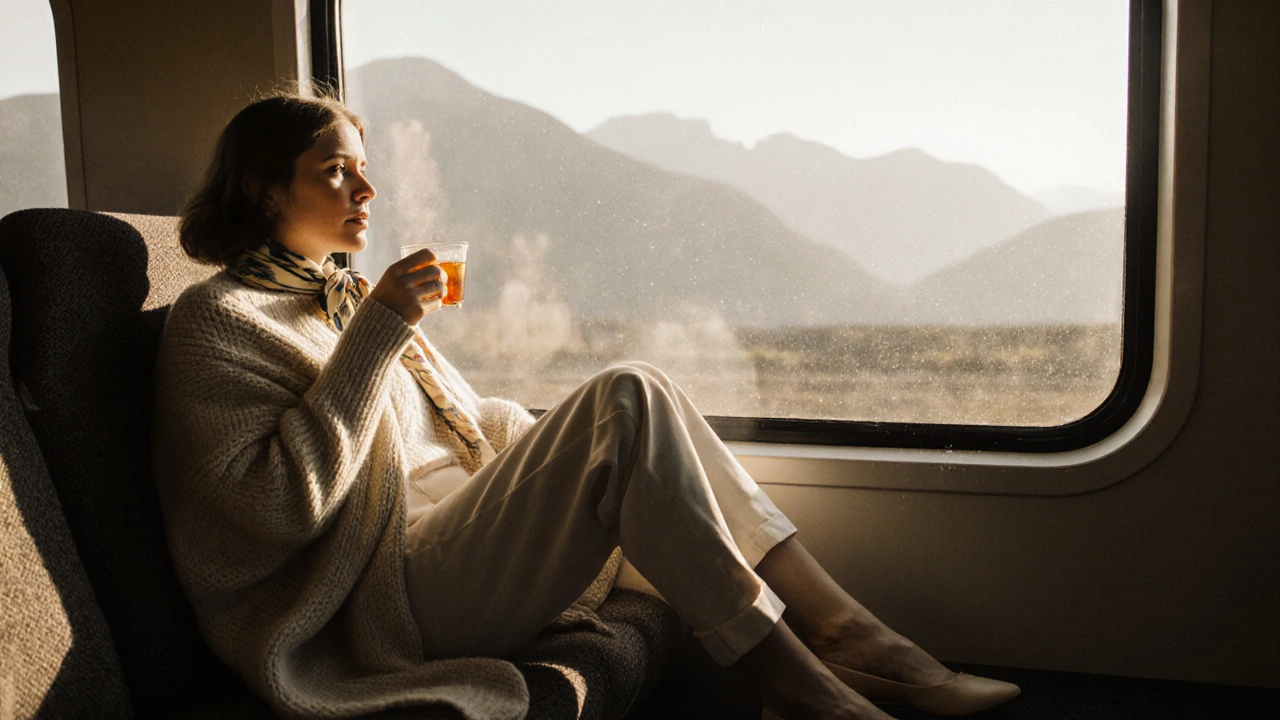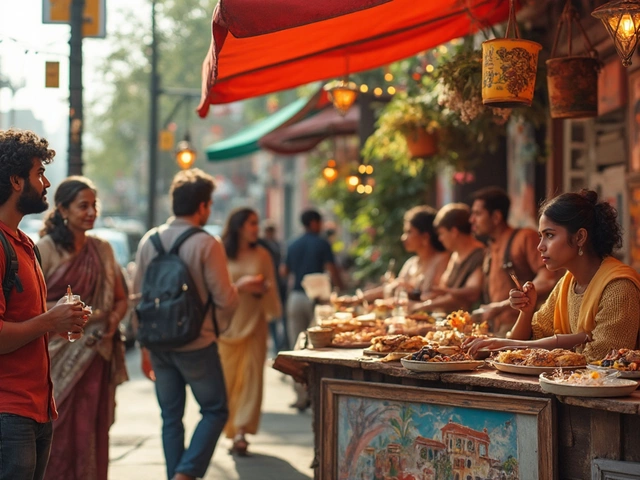When you think of the Orient Express, you don’t picture jeans and sneakers. You picture silk, velvet, and the quiet clatter of heels on polished wood floors. The train doesn’t just take you from Paris to Istanbul-it takes you back to a time when travel was an event, not a chore. And what you wear matters. Not because there’s a strict rulebook, but because the atmosphere demands it. This isn’t a cruise ship where you can wear flip-flops to dinner. This is a moving museum with a dress code written in elegance.
The Real Dress Code: It’s Not What You Think
There’s no official ‘Orient Express dress code’ posted on a wall. But if you’ve ever been on one of the restored vintage carriages-like the ones running on the Venice Simplon-Orient-Express today-you’ve felt it. The expectation is clear: evening wear is expected for dinner. Not because staff will turn you away, but because everyone else will be dressed like they’re attending a 1920s gala. And you’ll feel out of place if you’re not.
Women don’t need to wear ball gowns. But they do need to choose something that matches the mood. Think: a tailored jumpsuit in deep emerald, a lace cocktail dress with a velvet blazer, or a long silk skirt paired with a silk blouse and statement jewelry. The key isn’t extravagance-it’s intention. You’re not just dressing up. You’re stepping into a story.
Daytime: Comfort Meets Class
During the day, the train moves slowly through the Alps, the Carpathians, and the Danube Valley. You’ll be sipping tea in the lounge, reading by the window, or walking the narrow corridors. This is where practicality meets polish.
Most women wear tailored trousers or a knee-length wool skirt with a fine-knit sweater or a structured blouse. Layering is key-carriages can be warm from the radiators, but the windows let in cold air. A cashmere wrap or a lightweight wool coat draped over your shoulders works better than a bulky jacket. Shoes? Closed-toe flats or low heels. You’ll be walking on thick carpets and narrow gangways. No stilettos, no sandals.
One traveler from Melbourne told me she brought three outfits for a three-night trip: one for daytime, one for dinner, and one for the final evening. She wore the same cream wool trousers each day but changed tops and accessories. ‘It looked like I had more luggage,’ she said. ‘But I didn’t.’
Evening: The Unwritten Rule
Dinner on the Orient Express is a ritual. You’re seated at a table with candlelight, crystal glasses, and a menu that changes nightly. The waitstaff wear white gloves. The music is live piano. And the women? They wear dresses.
It’s not about brand names. It’s about texture and silhouette. A simple black dress with a high neckline and long sleeves, paired with pearl earrings, looks just as right as a beaded Art Deco gown. The difference? One costs $120. The other costs $1,200. Both work.
What doesn’t work? Jeans. Leggings. T-shirts. Even ‘dressy casual’ doesn’t fly here. One woman showed up in a sequined top and black pants and was politely asked if she’d like to change. She did. She returned in a velvet dress from her suitcase and spent the rest of the trip smiling.
The rule of thumb? If you’d wear it to a fine restaurant in Paris or Vienna, you’re probably safe. If you’d wear it to a wedding you’re not invited to, maybe reconsider.
Accessories: The Silent Language
What you carry says as much as what you wear. A small clutch, not a tote. A pair of elegant gloves, even if you don’t wear them all night. A single statement piece-maybe a vintage brooch, a diamond pendant, or a silk scarf tied around your neck like a 1930s film star.
Many women bring a small compact mirror and lipstick. Not because they’re vain, but because the train’s lighting is soft, and you want to look like you belong. A touch of rouge, a swipe of color-it’s part of the ritual.
And don’t forget the bag. A structured handbag in leather or satin, small enough to fit under your chair. You won’t need a laptop, a phone charger, or a change of clothes. Just your ticket, your room key, and maybe a book by Agatha Christie.

What Not to Wear
Let’s be clear about what to leave at home:
- Denim of any kind-jeans, jackets, skirts
- Sneakers, flip-flops, or athletic shoes
- Short shorts, tank tops, or crop tops
- Overly casual dresses-think ‘going out for cocktails’ not ‘going to dinner’
- Heavy perfume or cologne-the train’s scent is wood, leather, and tea. Don’t fight it.
One woman brought a fur stole. She thought it was glamorous. It wasn’t. The train doesn’t do faux fur or real fur anymore. Too much of a climate mismatch. And too many guests noticed. You don’t want to be the one everyone whispers about.
Seasonal Adjustments
Winter routes through the Alps mean colder nights. Summer runs to Istanbul mean warmer cabins. Pack accordingly.
In winter: bring a long wool coat for boarding, a warm scarf, and a pair of closed-toe boots you can change out of. Inside, you’ll be in silk and cashmere. Outside, you’ll need protection.
In summer: lighter fabrics-linen, silk, cotton. Avoid black. It holds heat. Opt for navy, ivory, or muted greens. The train’s air conditioning is good, but the windows still let in the sun.
Real Stories, Real Outfits
A British widow in her 70s wore the same emerald green dress every night for her third trip on the Orient Express. She said her late husband bought it for her in Geneva in 1968. ‘He always said I looked like a movie star in it,’ she told me. She didn’t need to buy new. She just needed to remember.
A young couple from Tokyo brought their own vintage 1920s dresses from a family collection. She wore a beaded fringe dress. He wore a tuxedo. They didn’t rent. They didn’t buy new. They brought history with them. And the staff remembered them.
These aren’t outliers. They’re the norm.

Why It Still Matters
The Orient Express isn’t about getting from A to B. It’s about the journey being the destination. And fashion is part of that. It’s not vanity. It’s respect-for the train, for the history, for the other guests, and for yourself.
You don’t need to spend thousands. You don’t need to be a fashion icon. But you do need to show up with care. That’s the real luxury.
When you step off the train in Venice or Istanbul, you won’t remember the scenery as much as how you felt. And how you felt? You felt like you belonged.
What to Pack: A Simple Checklist
For a three-night journey, here’s what most women actually pack:
- Two dinner outfits (one dress, one jumpsuit or skirt-blouse combo)
- Two daytime outfits (trousers or skirt with layered tops)
- One lightweight wool coat or wrap
- Three pairs of shoes: flats, low heels, and one pair for walking outside
- One small clutch or evening bag
- One silk scarf or statement necklace
- Minimal makeup and lipstick
- One pair of gloves (optional, but classic)
- One book or journal
That’s it. No suitcases. No overpacking. Just intention.
Final Thought: It’s Not About the Clothes
The Orient Express doesn’t care if your dress is from Chanel or a thrift store in Prague. It cares that you chose to dress like you’re part of something rare. Something timeless.
That’s the real magic. You’re not just wearing clothes. You’re wearing a moment.



